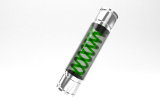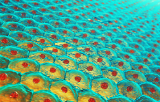Canvax Biotech
 |
||
Canvax is a leading manufacturer and supplier of the most innovative solutions, kits and R&D Reagents inside Molecular Biology fields. Since its foundation in 2001, Canvax offers reliable, cost-effective and easy-to-use innovative tools for research. Based in Córdoba (Spain), since its beginning it has focused on R&D of multiplex high throughput platforms (HTS) for Drug discovery and Diagnostic applied biosensors. Over a decade later, Canvax is a worldwide leading expert in GPCR expression in heterologous cells, with important patents and exclusive know-how. Canvax prides itself to be the first company to get an unprecedented milestone that could revolutionize the Diagnostics sector: Canvax established stable high-level expression of odour GPCRs into heterologous cell lines in 2014. This key milestone, that could be applied in diagnostic, perfume and cosmetic industry, are being employed to obtain a molecular nose, a sensitive and non-invasive diagnostic molecular device for early detection of cancer, as the nose of trained dogs do. Thanks to this project, Canvax was awarded, in 2013, with the largest Public & Private Contract for Pre competitive Technology Development in Spanish history. Website : www.lifescience.canvaxbiotech.com | ||

Cloning tools
DNA cloning or molecular cloning is the process of making multiple identical copies of a particular piece of DNA. Molecular cloning generally uses DNA sequences from two different organisms: the species that is the source of the DNA to be cloned, and the species that will serve as the living host for the replication of the recombinant DNA. Molecular cloning methods are at the heart of many contemporary fields of modern biology and medicine. In a typical DNA cloning procedure, the gene or other DNA fragment of interest is first inserted into a circular piece of DNA called a plasmid. The insertion is performed using enzymes that "cut and paste" the DNA, and it produces a recombinant DNA molecule, or DNA assembled from fragments from multiple sources.
Virtually any DNA sequence can be cloned and amplified, but certain factors can limit the success of the process. Examples of DNA sequences that are difficult to clone are reverse repeats, origins of replication, centromeres and telomeres. Another characteristic that limits the chances of success is the large size of the DNA sequence. Insertions larger than 10 kbp have very limited success, but bacteriophages such as the bacteriophage λ can be modified to successfully insert a sequence up to 40 kbp.



